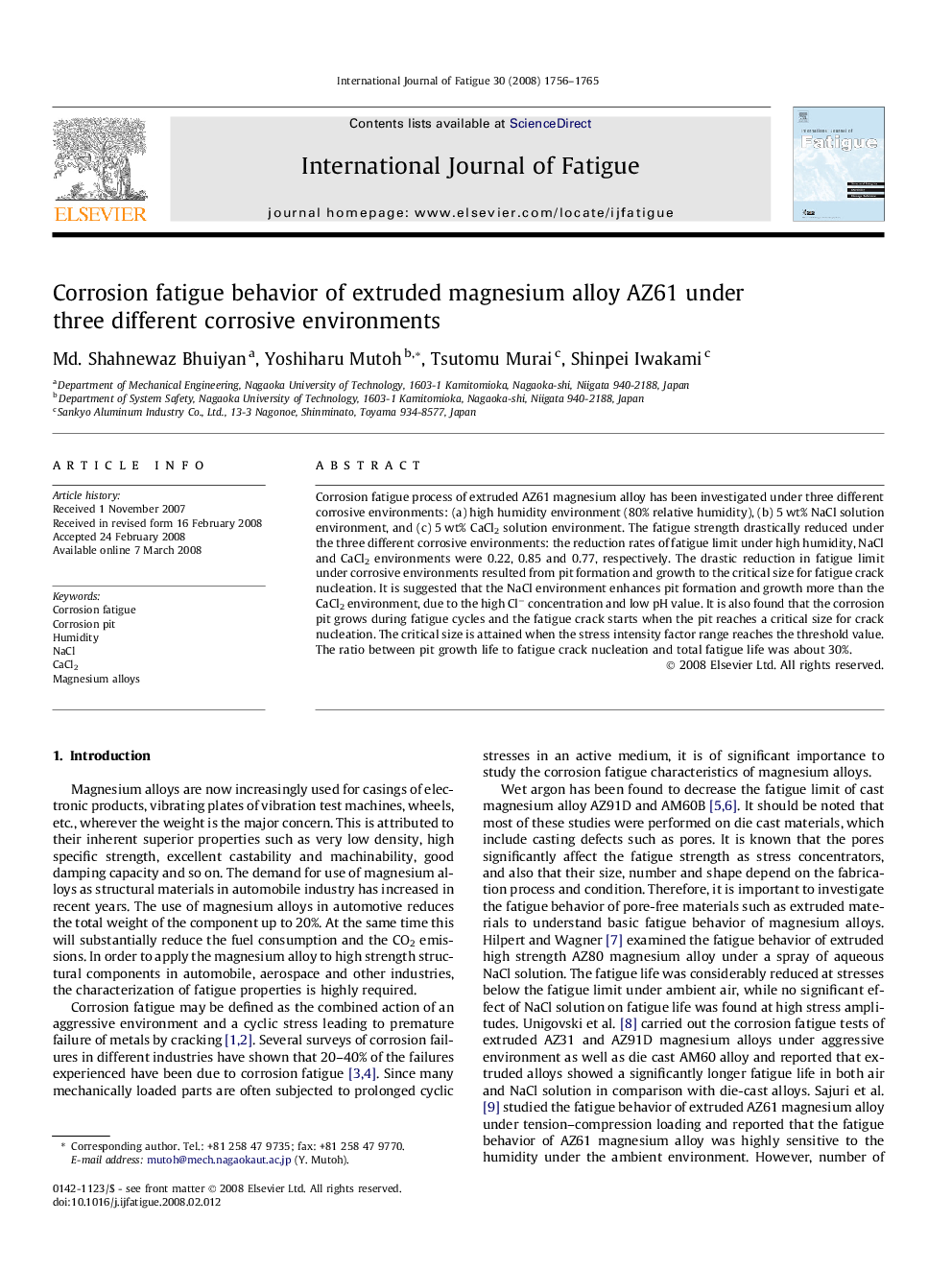| کد مقاله | کد نشریه | سال انتشار | مقاله انگلیسی | نسخه تمام متن |
|---|---|---|---|---|
| 781626 | 1463834 | 2008 | 10 صفحه PDF | دانلود رایگان |

Corrosion fatigue process of extruded AZ61 magnesium alloy has been investigated under three different corrosive environments: (a) high humidity environment (80% relative humidity), (b) 5 wt% NaCl solution environment, and (c) 5 wt% CaCl2 solution environment. The fatigue strength drastically reduced under the three different corrosive environments: the reduction rates of fatigue limit under high humidity, NaCl and CaCl2 environments were 0.22, 0.85 and 0.77, respectively. The drastic reduction in fatigue limit under corrosive environments resulted from pit formation and growth to the critical size for fatigue crack nucleation. It is suggested that the NaCl environment enhances pit formation and growth more than the CaCl2 environment, due to the high Cl− concentration and low pH value. It is also found that the corrosion pit grows during fatigue cycles and the fatigue crack starts when the pit reaches a critical size for crack nucleation. The critical size is attained when the stress intensity factor range reaches the threshold value. The ratio between pit growth life to fatigue crack nucleation and total fatigue life was about 30%.
Journal: International Journal of Fatigue - Volume 30, Issues 10–11, October–November 2008, Pages 1756–1765